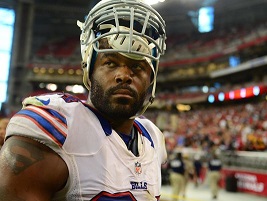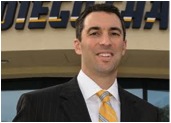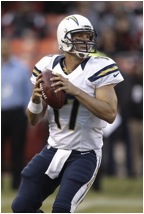[adsenseyu1]
How do you build a winning football team? Over the next few weeks I am going to look at a handful of teams that are either relatively early in their rebuilding process or on the verge of a possible rebuild. The purpose of this is not to reflect on past regime decisions compared to the current decisions but rather to start the analysis from day one and evaluate personnel decisions along with contract structures and styles to see if certain trends help produce a winning franchise.
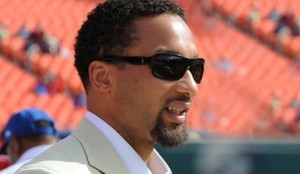 State of the Franchise and Front Office
State of the Franchise and Front Office
Since the 1999 season, 31 of the 32 NFL teams have made the playoffs in at least one season. After five straight seasons finishing last in the AFC East, its fourth in a row under now former GM Buddy Nix, the Buffalo Bills are the lone team not to make a playoff appearance since 1999 and are in the process of a full rebuild. With new General Manager Doug Whaley, Head Coach Doug Marrone, and first round quarterback selection E.J. Manuel, the Bills are hoping they can turn the franchise around and end the long playoff drought. Whaley, who served under Nix as Assistant General Manager since 2010, assumes the vacated GM position created by Nix’s resignation after this years NFL draft. Whaley received a contract extension in February and had been heavily involved in the coaching search that eventually led to former Syracuse head coach Doug Marrone replacing Chan Gailey as the Bills new head coach. Nix’s resignation as GM is not a clean cut from the organization though, as he is being retained as a Special Assistant to the team.
Contract Strategies and Trends
The succession of Nix to Whaley and subsequent retaining of Nix on staff poses an interesting question – will anything actually be different? The Bills have not been shy about using both roster and workout bonuses in significant deals. Over the past few years, Ryan Fitzpatrick, Fred Jackson, Stevie Johnson, and Leodis McKelvin all received substantial roster and workout bonuses in their respective extensions and Kyle Williams also received yearly roster bonuses in his. Free agent acquisitions Manny Lawson and Kevin Kolb received both roster and workout bonuses as well in their deals this offseason. Lawson is due a $500,000 roster bonus in 2014 and 2015, a $250,000 roster bonus in 2016, and a yearly $50,000 workout bonus as part of his 4-year deal while Kolb is due $250,000 roster bonus in 2013, a $1 million dollar roster bonus in 2014, and a yearly $100,000 workout bonus as part of his 2-year deal.
The big elephant in the room though is Mario Williams’ behemoth contract he signed last offseason. Williams’ 6-year/$96 million contract also has substantial roster and workout bonuses including a $10,600,000 roster bonus in 2014 and a yearly $500,000 workout bonus in 2013-2016. Jason did a great job summarizing exactly why this deal does not make any sense considering the circumstances and why its such a cap killer in his Best and Worst Contracts: The Buffalo Bills.
“Williams was never a top pass rusher in the NFL. He has always been good but more like top 20 good, not top of the NFL good. Williams makes 14% more than Julius Peppers and about 26% more than Charles Johnson and Jared Allen, the next three highest paid players at the position. Williams 3 year average leading into his deal with the Bills in both sacks and tackles was worse than all 3 of those players yet he earned significantly more. Williams will cost the Bills $17.8 million in dead money if cut in 2014 and $12.4 million in 2014, making him a near impossible player to move on from in the near future. Williams can be productive but it is unlikely he can ever be productive enough to match the price that the Bills agreed to pay for him.”
One final thing to take a quick look at is the Bills’ dead money situation. As part of their massive rebuild, the Bills released Ryan Fitzpatrick, Terrence McGee, Nick Barnett, George Wilson, Tarvaris Jackson and Mark Anderson among other players and as a result racked up about $11.6 million in dead money so far for the 2013 season. In year 1 of a rebuild, that figure is nothing to really worry about and by comparison is fairly low. Other teams in the midst of a full rebuild like the Jets and Raiders have upwards of $21 million (mostly $13 million from trading Revis) and a whopping $50 million respectively this year. The part to keep an eye on is 2014 where right now the Bills have the most dead money going into the 2014 season at $10 million due to Ryan Fitzpatrick’s $7 million and Mark Anderson’s $3 million respective charges. By comparison, the Jets don’t have a single dollar of dead money charges right now and the Raiders only have Michael Huff’s $6.2 million charge.
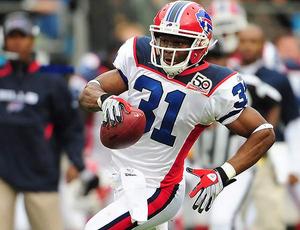 Biggest Upcoming Roster Decision
Biggest Upcoming Roster Decision
A few months ago, this section would have been all about what to do with Ryan Fitzpatrick and would have looked like a much more basic version of Jason’s great write up here. Now the biggest decision for the Bills is how to handle their All-Pro free safety Jairus Byrd. Instead of letting Byrd test free agency, the Bills used their non-exclusive franchise tag on him. The non-exclusive tag for a safety this year is $6,916,000, contingent on Byrd signing his tender. Under the non-exclusive tag, Byrd was free to negotiate with other teams, but if he agreed to terms with that team, the Bills had the right to match the offer or receive two 1st–round picks as compensation for Byrd. Unsurprisingly, no team agreed with Byrd, and after extensive attempts by the Bills and Byrd to come to an agreement, a long-term deal could not be reached by the July 15 deadline. Currently, Byrd refuses to sign his tender and his holding out of training camp. The Bills’ hands are tied – by rule, they are unable to sign Byrd to a long-term extension until after the 2013 season or trade him until Byrd signs his tender. Byrd’s options are now to sign his tender before week 1 of the regular season and play out the year under the franchise tag or wait until week 10 and sign his tender in time to play 6 games and get credited for the league year. The best Byrd can hope for is to sign his tender and collect a nice paycheck this year and try to prevent the Bills from franchising him again in 2014.
Reports are that Byrd wishes to be the highest paid safety in the league and Bills seem to not be willing to match that demand. Will that demand change by the end of the 2013 season? At the high-level Byrd has played consistently over the past few years, probably not. Assuming that Byrd signs his tender at some point and gets credited for the league year, the Bills will have a few options once the season ends. They can agree to a new deal with Byrd, franchise him for a second year in a row, or let him test free agency. If they decide to tag him again, the price will be at 120% of his tag price this year, which comes out to about $8.3 million. The bottom line is this situation is a long way away from being resolved whichever route the Bills decide to go.
Past ‘State of Rebuild’ Articles
Ryan Feder Tulane University Law School J.D. Candidate 2015 @RyanFeder rfeder1@tulane.edu [subscribe2]
